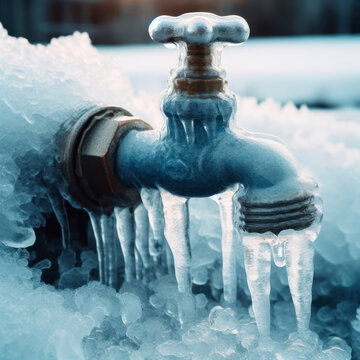Crucial Advice for Avoiding Frozen Pipes in Winter Conditions
Crucial Advice for Avoiding Frozen Pipes in Winter Conditions
Blog Article
Do you find yourself trying to find facts and techniques involving How To Avoid Freezing Pipes?

Winter can wreak havoc on your pipes, especially by freezing pipes. Below's just how to avoid it from taking place and what to do if it does.
Introduction
As temperature levels drop, the danger of icy pipelines boosts, possibly resulting in costly fixings and water damage. Comprehending just how to avoid icy pipes is important for house owners in cold environments.
Understanding Icy Pipes
What triggers pipelines to ice up?
Pipelines freeze when exposed to temperature levels below 32 ° F (0 ° C) for expanded periods. As water inside the pipes freezes, it broadens, putting pressure on the pipeline wall surfaces and possibly creating them to break.
Threats and problems
Icy pipelines can bring about supply of water interruptions, building damages, and costly repair services. Burst pipes can flooding homes and create comprehensive structural damages.
Indications of Frozen Pipeline
Identifying icy pipes early can stop them from rupturing.
How to recognize icy pipes
Seek reduced water circulation from taps, uncommon odors or sounds from pipes, and visible frost on revealed pipes.
Avoidance Tips
Insulating prone pipelines
Wrap pipes in insulation sleeves or make use of warm tape to shield them from freezing temperature levels. Focus on pipes in unheated or external locations of the home.
Home heating techniques
Maintain interior rooms effectively warmed, especially locations with plumbing. Open cabinet doors to allow warm air to flow around pipelines under sinks.
Shielding Outdoor Pipes
Yard hoses and outside taps
Disconnect and drain garden hoses prior to winter months. Set up frost-proof spigots or cover outdoor taps with insulated caps.
What to Do If Your Pipelines Freeze
Immediate activities to take
If you believe frozen pipes, maintain taps open to soothe pressure as the ice thaws. Make use of a hairdryer or towels soaked in hot water to thaw pipes gradually.
Long-Term Solutions
Architectural changes
Think about rerouting pipes away from outside walls or unheated locations. Add additional insulation to attic rooms, basements, and crawl spaces.
Updating insulation
Invest in high-grade insulation for pipes, attics, and wall surfaces. Proper insulation assists preserve regular temperature levels and minimizes the risk of frozen pipes.
Final thought
Stopping icy pipelines requires proactive steps and quick feedbacks. By comprehending the causes, signs, and preventive measures, house owners can protect their plumbing during cold weather.
6 Proven Ways to Prevent Frozen Pipes and Protect Your Home
Disconnect and Drain Garden Hoses
Before winter arrives, start by disconnecting your garden hoses and draining any remaining water. Close the shut-off valves that supply outdoor hose bibs and leave the outdoor faucet open to allow any residual water to drain. For extra protection, consider using faucet covers throughout the colder months. It’s also important to drain water from any sprinkler supply lines following the manufacturer’s directions.
Insulate Exposed Pipes
Insulating your pipes is an effective way to prevent freezing. Pipe insulation is readily available at home improvement stores and is relatively inexpensive. Pay close attention to pipes in unheated areas such as the attic, basement, crawl spaces, or garage. Apply foam insulation generously to create a buffer against the cold. You can also wrap your pipes in heat tape or thermostat-controlled heat cables for added warmth.
Seal Air Leaks
Inspect your home for any cracks or openings that could let in cold air. Seal any holes around the piping in interior or exterior walls, as well as the sill plates where your home rests on its foundation. Additionally, make sure to keep your garage door closed unless you’re entering or exiting. Leaving it open creates a significant air leak that can lead to frozen pipes.
Allow Warm Air Circulation
During cold snaps, it’s essential to allow warm air to circulate evenly throughout your home. Leave interior doors ajar to promote better airflow. Open kitchen and bathroom cabinets to help distribute heat consistently around the rooms. If you have small children or pets, be sure to remove any household chemicals or potentially harmful cleaners from open cabinets for safety.
Let Faucets Drip
A small trickle of water can make a big difference in preventing ice formation inside your pipes. When temperatures drop significantly, start a drip of water from all faucets served by exposed pipes. This continuous flow helps prevent the water from freezing. Additionally, running a few faucets slightly can relieve pressure inside the pipes, reducing the chances of a rupture if the water inside does freeze.
https://choateshvac.com/6-proven-ways-to-prevent-frozen-pipes-and-protect-your-home/

Do you appreciate more info about 6 Ways to Prevent Frozen Pipes? Give a short review directly below. We will be happy to listen to your thoughts about this review. In hopes that you come back again in the future. Do you know someone else who is involved in Prevent Frozen Pipes ? Take a moment to promote it. Thank you for your time spent reading it.
Request Free Estimate Report this page